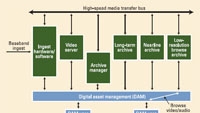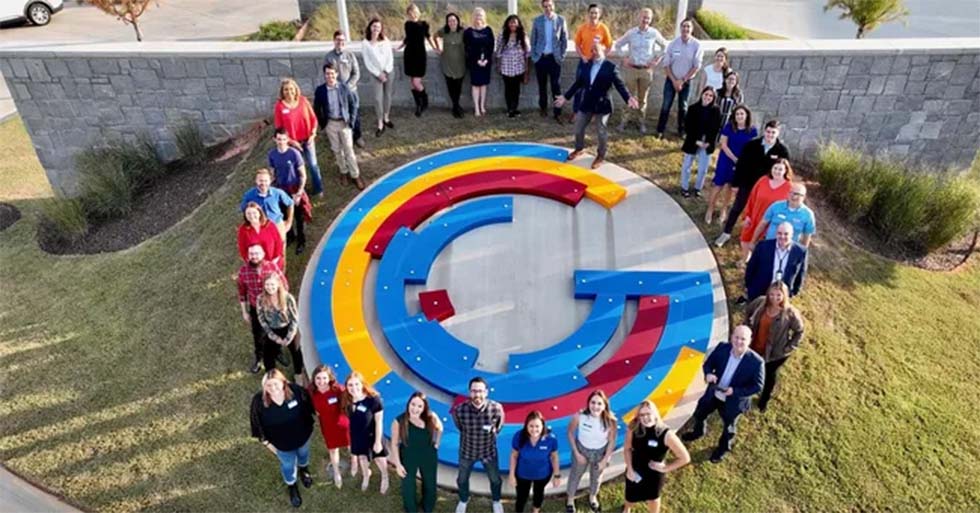Bankers understand asset management. They have a legal and fiduciary duty to protect assets and be able to tell you at any moment just where they are and what they are worth. They can't abide by estimates nor can they lose track of them. You would be shocked to hear a banker say, “Your assets are in a merged account, we think, but trust me, we will somehow get them out for you.”
It is not much different in many broadcast operations. One station in the United States, to remain unnamed, supposedly has archival news film footage of NFL player Franco Harris' “immaculate reception.” This footage is rumored to be the only actual video that might prove if Harris really caught the ball before it hit the ground.
The content is located in a film can, spliced — as was the custom in that era — along with all of the news footage from that night. It's stored in the transmitter building, as was this station's custom. It's safe and secure, in a location known to a rough degree, though checking to make certain would prove a challenge. It is possible the asset was lost 30 years ago.
If you asked a broadcaster to develop a system that could track news assets, he might have difficulty doing this. There is no way to search for an asset without rummaging through boxes of deteriorating original news film. Sometimes, it's even worse at modern tapeless plants. Recordings made on nonvolatile memory are transferred to disk for edit (or edited directly from the memory card), and often the only permanent record is a melt reel made at the end of a newscast. The melt reel holds all of the edited stories for legal and archive use. In such a case, the lineage of the shots is lost, along with any other metadata that might make it searchable.
How to protect your assets
There are, of course, ways to protect the assets and make it possible to extract additional value from them in the future. In a modern plant, where servers are often the central repository and master ingest point, assets and their metadata exist in their most complete form. Metadata recorded in the field is (hopefully) transferred with the clips, and the edited material contains references to its heritage in the field footage. What needs to happen to fully protect the asset and its value? One might glibly say, “use digital asset management (DAM)” software. This is partly true, but not completely.
The asset needs to be available, which in the case of some systems means adding an archive or nearline storage system to clear space in the expensive online system for new content. A DAM software system performs several tasks. It can catalog the assets, making the best use of the metadata captured with the content and allowing additional metadata to be added to enhance the value of the content. It can also be coupled to an archive manager, which can use expert rules to move the content off the server automatically. In concert, the combination of DAM and archive manager represents key elements of a total workflow solution, but not the entire solution.
The professional video industry's #1 source for news, trends and product and tech information. Sign up below.
This is one of the most confusing parts of analyzing and implementing complex software systems. Some vendors take responsibility for the entire picture, providing all subsystems and ensuring that they interface successfully. In many instances where end users picked best-in-class applications from different vendors and attempted to get all parties to play nice, there are stories of delays and cost overruns. This results from the attempt to understand all of the variables involved and manage the complex software integration of the various packages.

Each of the storage elements, as well as ingest from baseband or file sources, are under the watchful eye and — in some respects — control of the DAM manager. (See Figure 1.) The figure shows a secondary path from the low-resolution browse subsystem, which carries browse video to DAM clients. Using that video, users can input additional metadata or browse and preview content. Notice that the archive manager sits at a slightly different level, as it commands the movement of content among all of the storage silos. Each of the software and hardware subsystems is to a degree autonomous. The video server may also serve content to editing stations or play out to master control under automation control, which is not shown here for simplicity.
There could be multiple servers or archives attached to the system, but functionally, the DAM keeps track of the whereabouts of all content, both in the low-resolution browse and high-resolution instances. When it is appropriate to purge content from the high-resolution server, DAM can remove it from the low-resolution browse. Or if a copy has been stored in the archive system, DAM might instruct the browse system to retain its copy to enable searching of content. If an application, such as an edit system, requests a piece of content that is on the archive, the DAM system would instruct the archive manager to move it to an online repository for use, always keeping track of each instance of the content in a detailed database.
Conclusion
It is easy to see how there is an advantage to putting more eggs in one basket. Communication is needed among all applications to make DAM successful. An operation done without communication could leave the asset management system in the dark about either new or existing content, quickly making the system marginally useful. When this is done right, it makes complex systems much more manageable. BE
John Luff is a broadcast technology consultant.
Send questions and comments to:john.luff@penton.com
